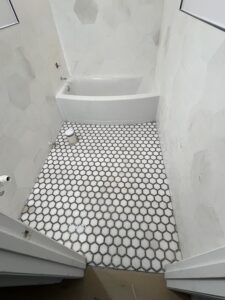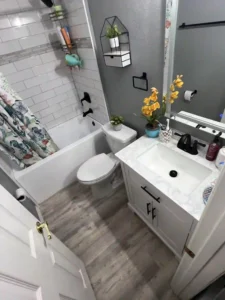
Image by lobo from Getty Images Signature on Canva
Ever admired the flawless work of professional floor installers and wished you could achieve the same results in your own home? The truth is, while experience certainly matters, the right tools can significantly impact the quality of your wood floor installation. Professionals rely on a specific set of wood floor installation tools, each designed for a particular task, to ensure their work is precise, efficient, and long-lasting.
In this comprehensive guide, we’ll take you behind the scenes and reveal the essential tools that every DIYer needs for a successful wood floor installation.
Different Wood Floor Installation Tools and How to Use Them
Installing a wood floor is a multi-step process that requires various specialized tools. Each tool plays a crucial role in ensuring a successful and professional-looking installation. Let’s explore the different categories of wood floor installation tools and how to use them effectively:
Measuring and Marking Tools
Before you even pick up the first plank, accurate measuring and marking are essential for a successful installation. These tools will help you plan your layout, ensure straight lines, and avoid costly mistakes:
- Tape Measure: A reliable tape measure is the foundation of any flooring project. Use it to measure the room’s dimensions, calculate square footage, determine plank lengths, and plan the layout of your floor. A tape measure with a locking mechanism ensures accuracy and prevents the tape from retracting unexpectedly.
- Chalk Line: This simple tool creates straight lines across the subfloor, serving as guides for aligning your first row of flooring and ensuring a straight layout throughout the room. Simply snap the chalk line taut and release it to leave a perfectly straight line.
- Carpenter’s Square: This L-shaped tool verifies right angles and helps you make precise cuts for areas like door jambs and transitions. It’s essential for ensuring a clean, professional fit where the flooring meets other elements in the room.
- Moisture Meter: Before you even start laying down planks, a moisture meter is crucial to check the moisture content of your subfloor and wood planks. This ensures compatibility and prevents issues like warping or cupping later on.
Cutting Tools
Wood flooring rarely comes in sizes that perfectly fit your room. These cutting tools will help you trim planks to size and create custom cuts for a seamless installation:
- Table Saw or Circular Saw: These powerful saws are essential for making long, straight cuts in wood planks to fit the room’s dimensions or work around obstacles. A table saw offers greater precision and stability, while a circular saw is more portable.
- Jigsaw: When you need to make curved or irregular cuts, such as those around vents, pipes, or intricate room features, a jigsaw is your go-to tool. Its blade can navigate curves and corners with ease.
- Miter Saw: This specialized saw is designed to make angled cuts, which are essential for creating mitered corners and transitions. It ensures a seamless and professional finish where two pieces of flooring meet at an angle.
- Hand Saw: While not as efficient as power tools, a hand saw is indispensable for smaller cuts, fine adjustments, or areas where a power source isn’t readily available.
- Pull Bar: As you near the end of the installation, a pull bar becomes crucial for pulling the last few rows of flooring tightly together when there’s not enough space for a tapping block. It ensures a tight fit and eliminates gaps between planks.
Fastening Tools
Securing the wood flooring to the subfloor is a critical step in the installation process. These tools will help you achieve a secure and stable floor:
- Floor Nailer/Stapler: This is the workhorse of flooring installation. It drives nails or staples through the tongue of each plank, securing it to the subfloor. Pneumatic (air-powered) nailers are preferred by professionals for their speed and power, while manual staplers are a more affordable and user-friendly option for DIYers.
- Hammer and Nail Set: In tight spaces where a floor nailer can’t reach, such as the final row of flooring against a wall, a hammer and nail set allows you to manually nail the planks in place. The nail set helps countersink the nails for a smooth finish.
- Mallet and Tapping Block: This duo is used to gently tap planks together, ensuring tight seams and a flush fit.The tapping block protects the edges of the planks from damage during this process.
Finishing Tools
The final touches can make all the difference in the overall appearance of your floor. These finishing tools will help you achieve a professional and polished look:
- Floor Roller: If you’re installing engineered or laminate flooring that requires adhesive, a floor roller is essential for ensuring proper adhesion and a uniform bond between the planks and the subfloor.
- Pry Bar: This versatile tool is useful for removing baseboards or moldings, prying up old flooring, and even helping to lever planks into position during installation.
- Safety Glasses and Ear Protection: Always prioritize safety when working with tools. Safety glasses protect your eyes from dust and debris, while ear protection shields your hearing from the noise of power tools.
How Much Do Wood Floor Installation Tools Cost?
The cost of wood floor installation tools can vary significantly depending on the quality and brand, as well as whether you’re buying them individually or as part of a kit. Here’s a general overview of the price ranges you can expect:
Essential Tools:
- Tape Measure: $5-$20
- Chalk Line: $5-$10
- Carpenter’s Square: $10-$30
- Moisture Meter: $20-$100+
Cutting Tools:
- Table Saw: $150-$500+
- Circular Saw: $50-$200+
- Jigsaw: $40-$150+
- Miter Saw: $100-$400+
- Hand Saw: $15-$50
Fastening Tools:
- Floor Nailer (Pneumatic): $200-$500+
- Floor Stapler (Manual): $30-$80
- Hammer: $10-$30
- Nail Set: $5-$15
- Mallet: $10-$25
- Tapping Block: $10-$30
Finishing Tools:
- Floor Roller: $20-$50
- Pry Bar: $10-$40
- Safety Glasses: $5-$20
- Ear Protection: $10-$30

Image by bill oxford from Getty Images Signatures on Canva
What’s the difference between a floor nailer and a floor stapler?
Both tools serve the same purpose: to secure wood planks to the subfloor. Floor nailers use nails, while floor staplers use staples. Nailers are generally favored by professionals for their holding power, while staplers are often easier for DIYers to use and more affordable.
Do I need a table saw AND a miter saw?
It depends on the complexity of your project. If you’re making mostly straight cuts, a table saw or circular saw might be sufficient. However, if you have angled cuts, a miter saw will be necessary for creating mitered corners and transitions.
Can I use a regular hammer instead of a mallet?
While you could use a regular hammer, a mallet is specifically designed for striking wood without causing damage. It has a softer head that helps prevent denting and marring the flooring.
Need Help with Flooring Installation? Call Miller 86 Today!
Equipping yourself with the right wood floor installation tools is essential for a successful wood floor installation that will really stand the test of time. While experience and skill are valuable, the tools you use can significantly affect the quality and longevity of your new floor. By understanding the purpose of each tool and mastering its use, you’ll be well on your way to achieving a professional-looking result that adds beauty and value to your home.
If you want to skip the hassle of installing your own wood floors, consider leaving it to the professionals at Miller 86. Our expert installers have the expertise and tools to ensure an efficient installation. Schedule a consultation today!





